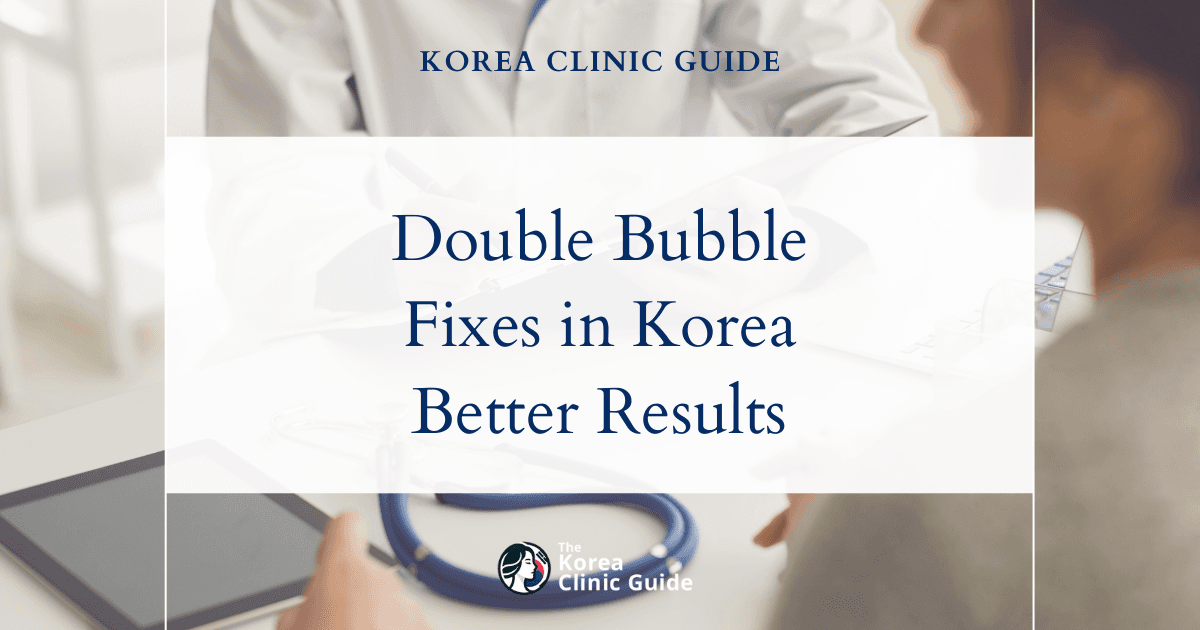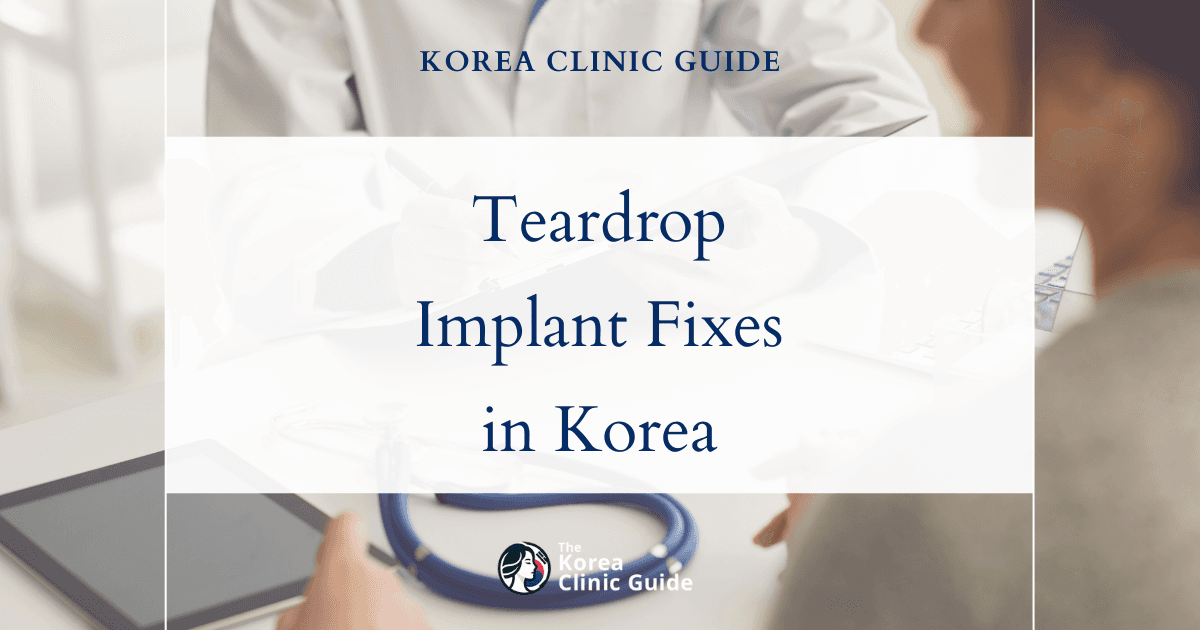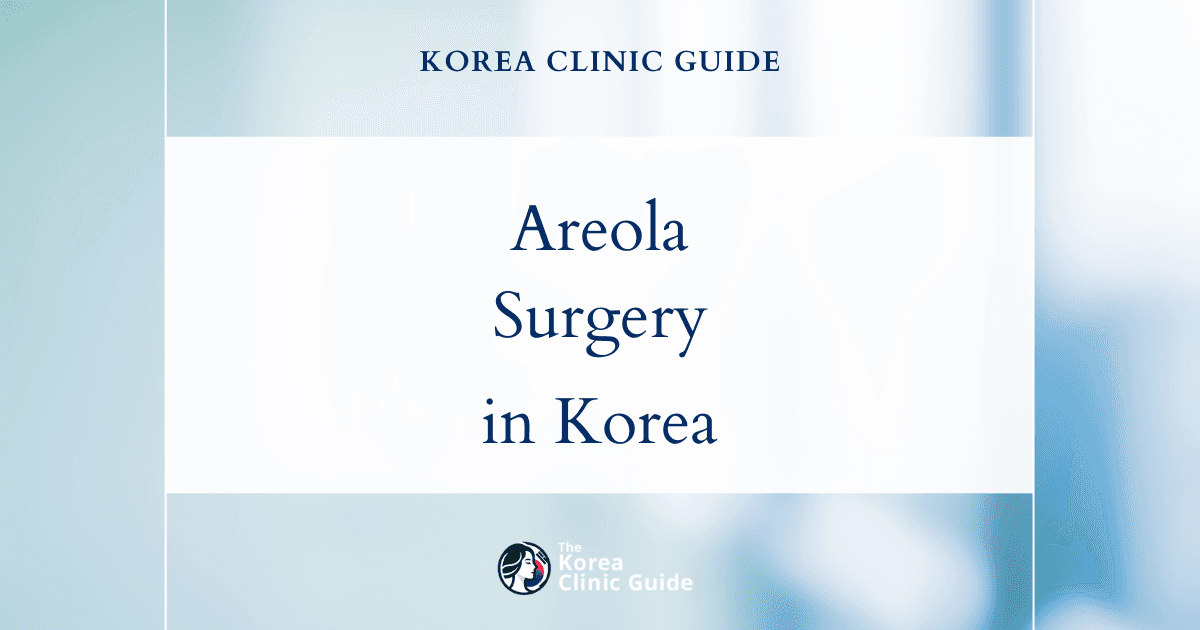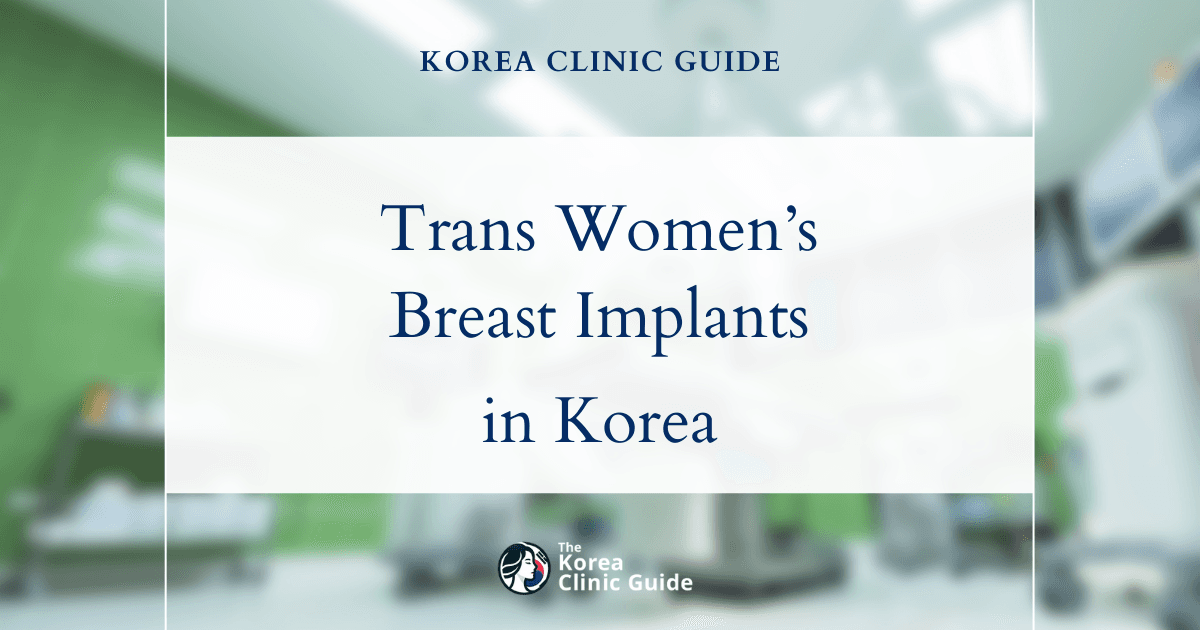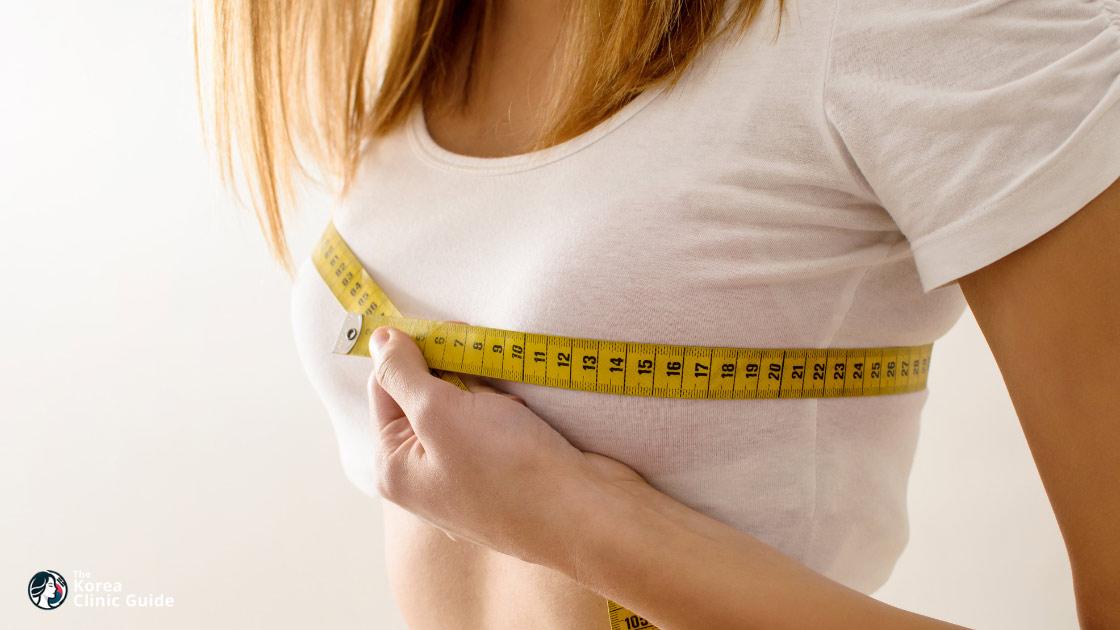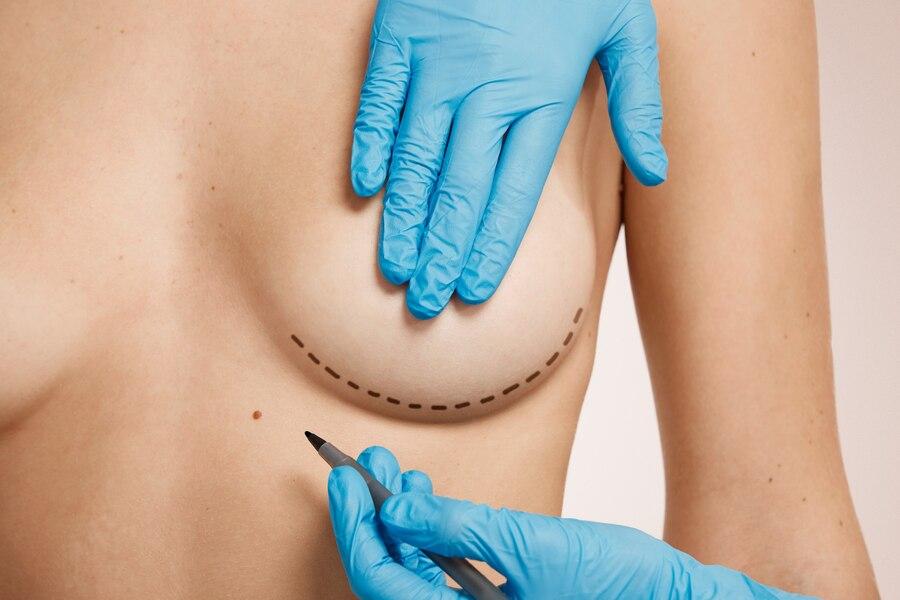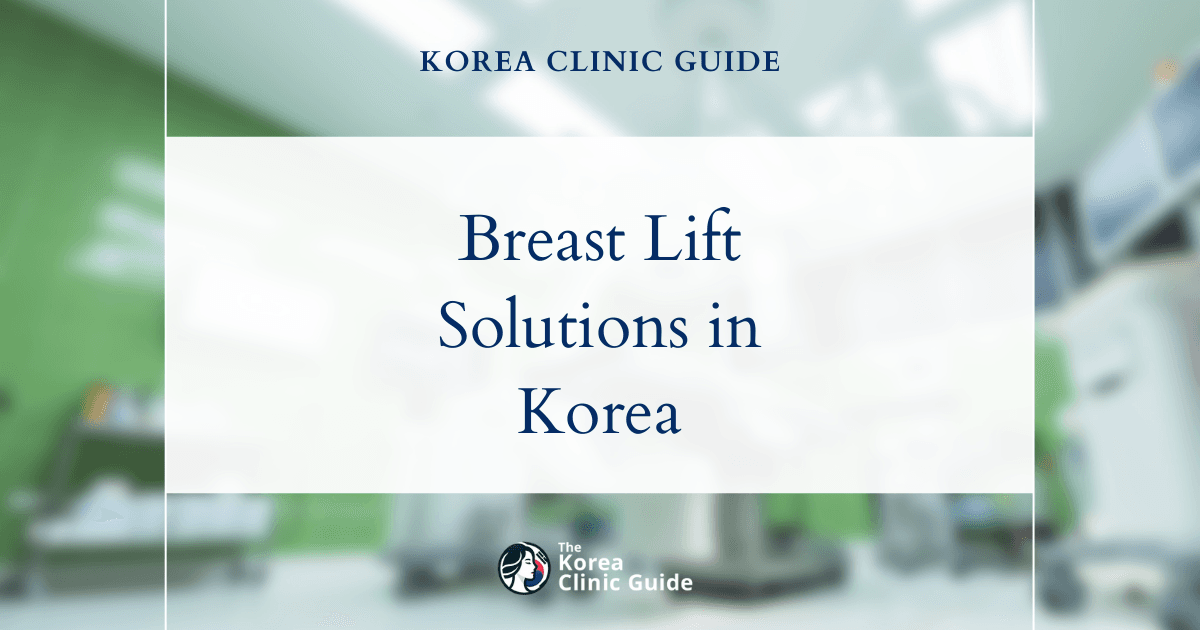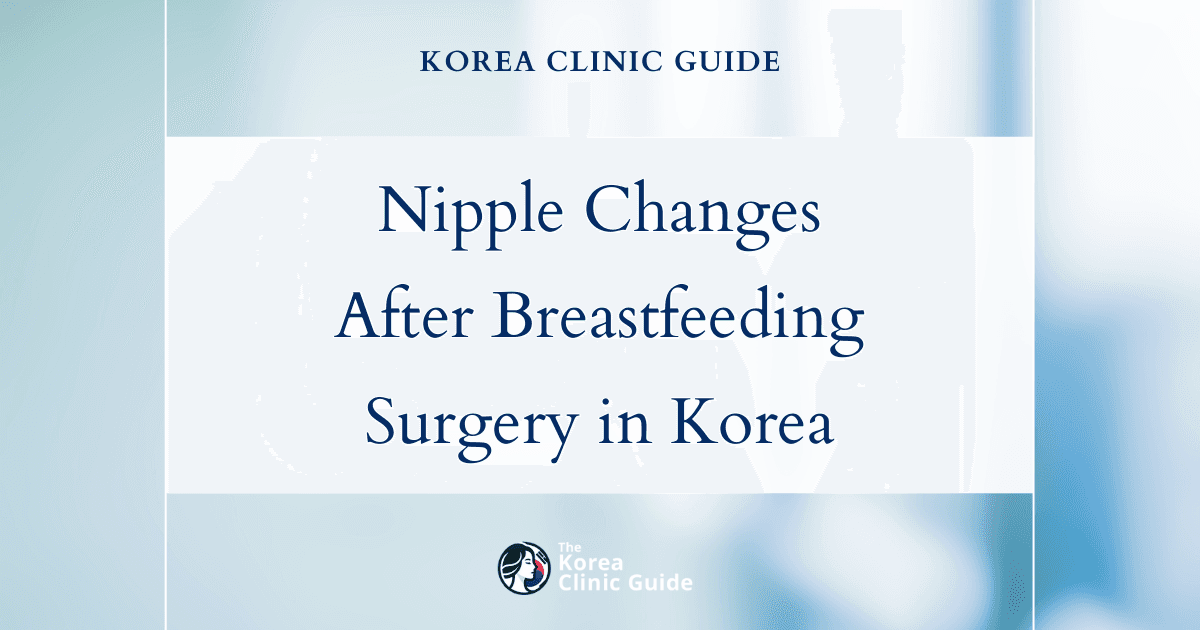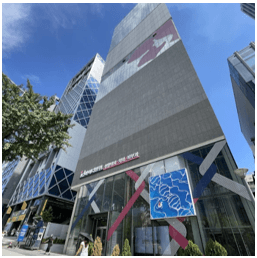Medical Tourism Blog
Breast Reduction in Korea | Best Clinics, Costs, Procedure Types & More
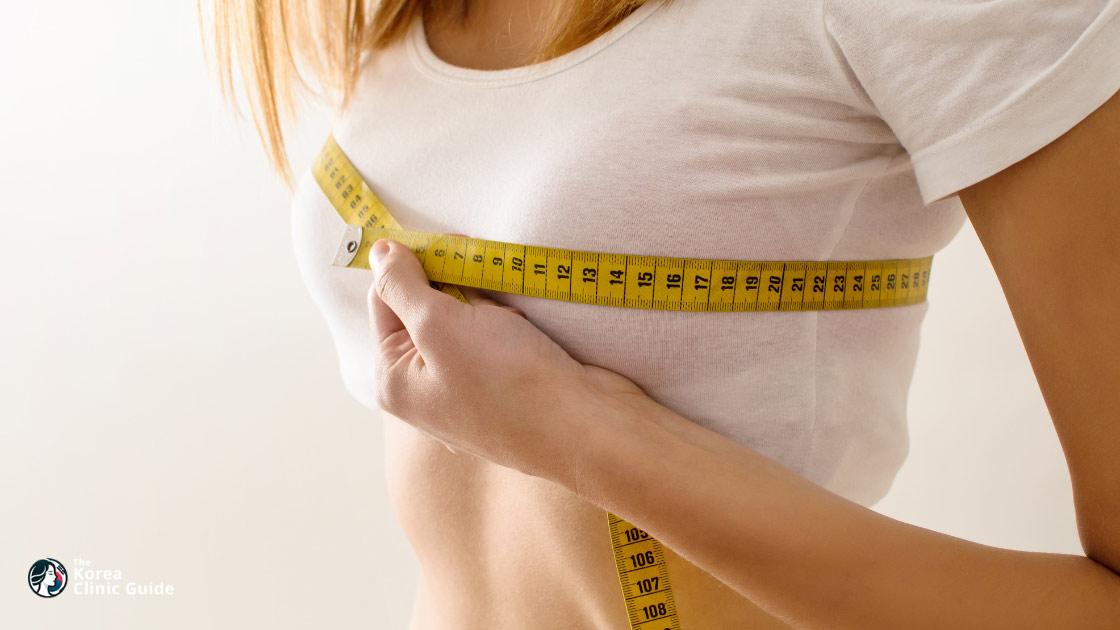
Table of contents
- What Is Breast Reduction?
- Best Clinics in Korea for Breast Reduction
- Breast Reduction in Korea
- Alternatives to Breast Reduction
- Conclusion
Considering treatment in Korea? Everything you need to know e.g. — how to avoid scams, visas, interpreters, recovery tips — in our Medical Tourism Master Guide. Plan with confidence in minutes, not weeks!
Imagine finding relief from chronic pain, improved body proportions, and a boost in confidence—all from a single procedure. Breast reduction surgery offers these life-changing benefits, and South Korea is becoming a top choice for those seeking this transformative experience due to its renowned expertise and cutting-edge medical facilities.
What Is Breast Reduction?
Breast reduction, also known as reduction mammoplasty, is a surgical procedure aimed at reducing the size of large breasts. This is achieved by removing excess breast tissue, fat, and skin. The primary objective of breast reduction surgery is to bring the breasts into a size proportionate to the individual's body, thereby alleviating any discomfort or physical issues caused by overly large breasts.
Who Can Benefit from the Procedure?
Breast reduction surgery can be beneficial for individuals who experience physical or emotional discomfort due to the size of their breasts. Candidates commonly include those who suffer from:
-
Chronic Back, Neck, and Shoulder Pain: Large breasts can contribute to persistent pain and discomfort in these regions due to the additional strain.
-
Skin Irritation: Excessive breast tissue can cause skin irritation or rashes under the breasts.
-
Posture Issues: The weight of large breasts can impact posture, potentially leading to long-term musculoskeletal problems.
-
Difficulty in Physical Activities: Engaging in sports and other physical activities can be challenging or painful for individuals with large breasts.
-
Emotional and Social Discomfort: Large breasts can sometimes lead to self-consciousness or unwanted attention, affecting an individual's quality of life.
Procedure Types

Breast reduction can be performed through various surgical techniques. The choice of technique depends on several factors, including breast size, shape, and the desired outcome. Some common types of breast reduction procedures include:
-
Anchor or Inverted T Reduction: This technique involves an incision around the areola, extending vertically downwards, and along the crease of the breast, creating an anchor shape. This method is ideal for significant reductions and reshaping.
-
Vertical or Lollipop Reduction: In this procedure, incisions are made around the areola and vertically down to the breast crease. This is suitable for moderate reductions and achieving a natural breast shape.
-
Liposuction: For cases requiring minor breast size reduction, liposuction can be employed. This involves minimal incisions and less scarring.
Pros and Cons
As with any surgical procedure, breast reduction comes with its own set of advantages and disadvantages.
Pros:
-
Pain Relief: Many patients experience immediate relief from chronic pain in the back, neck, and shoulders.
-
Improved Physical Activity: Reduced breast size allows for greater ease and comfort during exercise and other physical activities.
-
Enhanced Aesthetics: The procedure can lead to more proportionate body contours, improving overall appearance.
-
Boost in Self-Confidence: Many individuals report improved self-esteem and confidence post-surgery.
-
Better Posture: Alleviation of weight can result in improved posture and reduced strain on the spine.
Cons:
-
Scarring: Depending on the surgical technique used, noticeable scarring may be a concern, though it often fades over time.
-
Loss of Sensation: There is a potential risk of reduced nipple or breast sensation.
-
Breastfeeding Challenges: Some individuals may experience difficulties with breastfeeding post-surgery.
-
Surgical Risks: As with any surgery, there are general risks, including infection, bleeding, and adverse reactions to anesthesia.
-
Recovery Time: Recovery can take several weeks, during which time physical activities and normal routines may be restricted.
Breast reduction surgery in Korea is performed by highly skilled surgeons, utilizing advanced techniques and facilities. Adequate consultation and medical evaluation are crucial to determine the most suitable approach for each individual.
Best Clinics in Korea for Breast Reduction
Listed below are the best clinics in Korea for breast reduction:
| Clinic Name | Key Features | Special Techniques |
|---|---|---|
| Okay Plastic Surgery Clinic | Dedicated Breast Center, renowned for highly experienced surgical team led by Dr. Cho, medical excellence, highest safety standards, individualized care, comprehensive aftercare, precision, empathy, supportive environment | Expertise in advanced breast procedures including breast reduction, lift, and nipple correction; complex reductions beyond other clinics’ scope; continuous research and study; state-of-the-art techniques |
| THEPLUS Plastic Surgery | Premier clinic in Gangnam’s Garosu-gil, elite globally recognized surgeons (Dr. Lee, Dr. Kim, Dr. Jeong), high academic standards, holistic experience from consultation to aftercare, patient satisfaction and safety prioritized | Board-certified breast specialists, natural and lasting outcomes, global leadership in surgical techniques, pioneering in aesthetics and safety, artistically-driven procedures |
| Lydian Plastic Surgery Clinic | Boutique clinic in Cheongdam, led by Dr. An Kyung Chun (Top 18 expert, Top 100 world doctor), patient-centered, innovative, continuous investment in new technology, anatomy-based customized results | 4-step aftercare (swelling reduction, irregularity correction, skin elasticity recovery, fat contouring), anatomy-based design, advanced body contouring, focus on modern techniques and equipment |
Okay Plastic Surgery Clinic
Okay Plastic Surgery Clinic stands out as a leading center for breast reduction in Korea, operating a dedicated Breast Center that specializes in advanced procedures such as breast reduction, breast lift, and nipple correction. The clinic is renowned for its highly experienced surgical team, led by Dr. Cho, whose expertise in breast surgery encompasses both standard procedures and complex cases that require significant reduction—procedures often beyond the scope of other clinics. Dr. Cho's continuous study and published research in the field underscore the clinic’s commitment to medical excellence and the highest safety standards.
At Okay Plastic Surgery Clinic, patients benefit from a holistic approach that extends beyond surgery itself. The clinic places strong emphasis on individualized care, delivering comprehensive aftercare to ensure natural and lasting results. With a philosophy rooted in precision, empathy, and sincere patient support, those seeking breast reduction at Okay Plastic Surgery Clinic can expect expert guidance, state-of-the-art techniques, and a supportive environment dedicated to achieving each patient’s unique aesthetic and health goals.
You can check out their website here: Okay Plastic Surgery Clinic Website
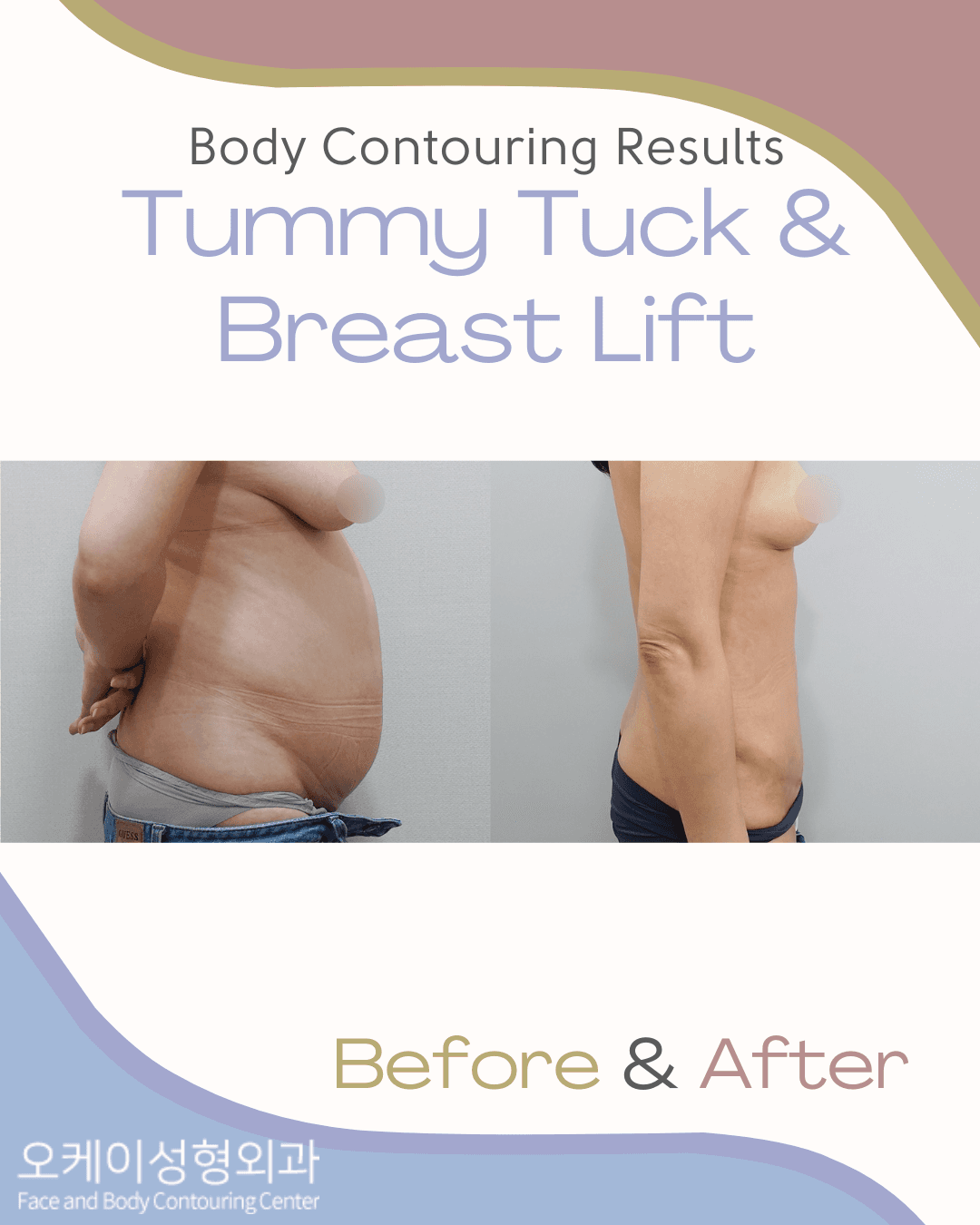
THEPLUS Plastic Surgery
THEPLUS Plastic Surgery stands out as the premier choice for breast reduction in Korea, offering world-class expertise in a facility dedicated to patient satisfaction and safety. Located in the prestigious Garosu-gil area of Gangnam, THEPLUS is staffed by an elite team of surgeons whose credentials reflect global leadership in plastic surgery. Dr. Lee, a board-certified specialist in breast surgery with experience at top Korean hospitals such as Seoul National University Hospital, ensures natural, long-lasting outcomes that prioritize both aesthetics and client safety. She is actively involved in leading professional societies, reinforcing her commitment to continual advancement and best practices in the field. The clinic is further distinguished by the presence of Dr. Kim and Dr. Jeong, internationally recognized authorities whose research, leadership roles, and educational contributions in plastic surgery are setting new industry standards. Patients at THEPLUS benefit from a holistic experience, from consultation to aftercare, with every aspect of the journey guided by pioneering surgeons who combine surgical precision with an artistic approach. The clinic’s on-site systems, global reputation, and record of academic excellence make it the most trusted destination for those seeking transformative and personalized breast reduction in Korea.
You can check out their website here: THEPLUS Plastic Surgery Website
Lydian Plastic Surgery Clinic
Lydian Plastic Surgery Clinic, located in the heart of the Cheongdam district in Seoul’s prestigious Gangnam area, is a premier destination for breast reduction and body contouring procedures in Korea. Led by Dr. An Kyung Chun—a renowned expert recognized among Korea’s Top 18 Aesthetic Plastic Surgery Experts and the Director of the 5D Liposculpture Academy—Lydian Clinic is lauded for its patient-centered approach, innovative techniques, and commitment to excellence. Dr. An brings over two decades of specialized experience to every procedure, offering patients the benefit of world-class expertise, modern aesthetic vision, and a wealth of international accolades, including being listed among the world’s Top 100 Doctors in Stem Cell Aesthetic Medicine.
What truly sets Lydian Clinic apart is its continuous investment in the latest medical technology, ensuring that no outdated equipment is ever used. Each breast reduction procedure is meticulously planned using anatomy-based design, allowing Dr. An to customize the outcome to fit the individual’s proportions and curves for the most natural-looking results. The clinic also offers a 4-step systematic aftercare program—including swelling reduction, irregularity correction, skin elasticity recovery, and residual fat contouring—delivering not only remarkable aesthetic outcomes but also prioritizing patient comfort and recovery. With its exclusive boutique setting, advanced medical techniques, and a distinguished specialist at the helm, Lydian Plastic Surgery Clinic stands as a top choice for those seeking the best in breast reduction in Korea.
You can check out their website here: Lydian Plastic Surgery Clinic Website
Breast Reduction in Korea
Breast reduction surgery, also known as reduction mammaplasty, is an increasingly popular medical procedure in South Korea. Known for its highly advanced medical technology and skilled surgeons, South Korea has become a top destination for individuals considering breast reduction. Here, we will explore what it is like to come to Korea for this procedure, detailing the steps from preparation to recovery.
Pre-Arrival Planning
Before you set foot in South Korea, thorough planning is essential. International patients usually start by researching clinics and surgeons, often utilizing online reviews and consulting forums dedicated to medical tourism. Many clinics offer online consultations and virtual assessments to provide an initial understanding of what the procedure will entail, estimated costs, and recovery times. It’s advisable to carry along your medical records and previous health assessments, which will be especially useful during consultations.
Choosing the Right Clinic and Surgeon
South Korea boasts a wide range of clinics, from small specialized practices to large medical centers in cities like Seoul and Busan. Choosing the right clinic and surgeon is critical. Look for board-certified plastic surgeons with ample experience in breast reduction specifically. Many clinics offer bi-lingual staff fluent in English, Japanese, or Chinese to assist international patients. Reading patient testimonials and reviewing before-and-after photos can also help in making an informed decision.
Travel and Accommodation
Arriving in South Korea is straightforward, with well-connected international airports in Seoul (Incheon International Airport) and Busan (Gimhae International Airport). Clinics often provide concierge services that include assisting with travel arrangements and transferring you from the airport to your accommodation. Many clinics have partnerships with nearby hotels, providing discounted rates for their patients. It's advisable to arrive a few days before the scheduled procedure to acclimatize and complete pre-surgery consultations.
Consultation and Surgery Preparations
Upon arrival, you will have an in-person consultation with your chosen surgeon. This consultation will involve a detailed discussion of your medical history, expectations, and the surgical process. Diagnostic tests, such as blood tests and imaging scans, may be conducted to ensure you are fit for surgery. The surgeon will explain the procedure, potential risks, and post-operative care in detail. You might also meet with an anesthesiologist to discuss anesthesia options and potential reactions.
The Surgical Procedure
Breast reduction surgery in Korea typically involves general anesthesia and takes about 3 to 5 hours, depending on the complexity. The surgeon will remove excess breast tissue, fat, and skin to achieve the desired size and shape. Advanced techniques such as vertical or "lollipop" incisions and the anchor or "inverted-T" incision are commonly used, minimizing visible scarring. After surgery, you will be taken to a recovery room where medical staff will monitor your vital signs for several hours before you are moved to your private room.
Post-Operative Care and Recovery
Post-operative care is a critical aspect of breast reduction surgery in Korea. Most clinics provide comprehensive aftercare, including routine check-ups, dressing changes, and specialized support garments. You will be given detailed instructions on how to care for your incisions, manage pain, and prevent infections. It's typical to stay in Korea for a week or more post-surgery to ensure proper healing and to attend follow-up appointments.
Cultural and Language Considerations
While South Korea is highly modernized, cultural and language barriers may exist. However, most medical staff in clinics catering to international patients speak English and are accustomed to treating foreigners. Clinics often provide translation services to help bridge any communication gaps, ensuring patients fully understand their treatment and care instructions. Additionally, South Korea is known for its hospitality, making the experience as comfortable as possible.
Exploring Korea during Recovery
Although relaxation and rest are paramount post-surgery, you may have the opportunity to explore some aspects of Korean culture during your recovery. From enjoying traditional Korean cuisine to visiting serene temples and parks, there are various ways to experience the country. However, strenuous activities should be avoided, and it’s always best to consult your medical team before embarking on any excursions.
Final Check-Ups and Returning Home
Before leaving South Korea, you will have a final check-up to ensure that your recovery is on track and there are no complications. The surgeon will provide a recovery plan and guidelines to follow once you return home. Many clinics also offer remote follow-up consultations via video calls to monitor your progress after you have left the country.
Choosing to undergo breast reduction surgery in South Korea is a significant decision, involving meticulous planning and consideration. The country's advanced medical facilities, skilled surgeons, and comprehensive care procedures make it a premier destination for this transformative procedure.
Alternatives to Breast Reduction
While breast reduction surgery can be life-changing for many women, providing both physical relief and aesthetic benefits, it is not the only option available. If you are considering breast reduction, understanding other alternatives can help you make a more informed decision. Here are three recommended alternatives to breast reduction surgery:
1. Non-Surgical Weight Loss
One alternative to breast reduction is achieving non-surgical weight loss, which can be effective for some women. Weight loss through diet and exercise can result in a decrease in breast size since breasts are partly composed of fatty tissues. By following a structured weight loss program, women might experience:
- Improved Proportion: Natural reduction of breast size, making them more proportionate to the body.
- Pain Relief: Reduction in upper back, neck, and shoulder pain as weight is lost.
- Easier Mobility: Enhanced ability to engage in physical activities and exercises without the discomfort of large breasts.
However, it is essential to note that weight loss might not be effective for all women, especially if their breast tissue is more glandular than fatty.
2. Physical Therapy and Exercise
Targeted physical therapy and exercise can provide significant relief from the discomfort associated with large breasts without the need for surgical intervention. Specific exercises can help strengthen the back and shoulder muscles, potentially alleviating pain and improving posture.
- Posture Improvement: Strengthening muscles that support the spine and shoulders can help mitigate the forward pull exerted by large breasts.
- Pain Management: Regular exercises focusing on the core, back, and shoulders can reduce pain and improve overall muscle tone.
- Customized Plans: A physical therapist can develop a personalized exercise regimen tailored to address individual needs and capabilities.
While this method does not reduce breast size, it can make living with large breasts more manageable.
3. Hormonal Treatments
For some women, especially those experiencing hormone-related breast enlargement, hormonal treatments might be a suitable alternative. Hormonal fluctuations can contribute to increased breast size, and addressing these imbalances with medication can help reduce breast volume.
- Hormone Regulation: Medication aimed at balancing hormone levels can lead to a decrease in breast size.
- Symptom Relief: Along with breast size reduction, treating hormonal imbalances can also alleviate other related symptoms like menstrual irregularities or mood swings.
- Medical Supervision: Hormonal treatments should always be administered under the guidance of a healthcare professional to ensure safety and efficacy.
While these treatments may not be suitable for everyone, they offer a non-surgical option that could address the underlying cause of breast enlargement for some women.
These alternatives offer various benefits and should be discussed with a healthcare provider to determine the most appropriate approach based on individual circumstances and health conditions.
| Procedure Price | Korean Won (₩) | USD ($) |
|---|---|---|
| Low Price | ₩15,000,000 | $10900 |
| High Price | ₩20,000,000 | $14500 |
Exchange rate as of 2025-05-22: 1 KRW = 0.0007 USD
Please note that these prices are approximate guidelines and can vary significantly based on the clinic and your individual circumstances.
Conclusion
In conclusion, breast reduction surgery in Korea combines advanced medical technology, skilled surgeons, and a holistic approach to patient care, offering an attractive option for individuals seeking relief from the physical and emotional burdens of excessively large breasts. With its emphasis on high standards of safety, personalized treatment plans, and aesthetically pleasing results, Korea has established itself as a leading destination for this procedure. Potential patients contemplating breast reduction can find reassurance in the country's renowned healthcare system and its commitment to excellence, ensuring they achieve both aesthetic goals and improved quality of life.
